Cambodian Genocide, Temples and Bo Bo
- Bryce and Anna

- Sep 12, 2023
- 8 min read
The best days are unexpected.
Our day started with my alarm going off at 3:30am, signaling it was time for a Spud Kings game. I worked the game until just after 7 then we got ready for the day. All we had planned was get breakfast and find something to do instead of sleep and succumb to our jet lag.
We decided on walking to a nearby temple to see what it had to offer.
After we ate our breakfast we started our approx. 8 minute walk down the river to the temple. About halfway into the walk we realized my biker shorts were not temple-appropriate so we had to go back to the hotel.
Equipped with jeans and a screenshot of a map, we headed out in the direction of the temples. The first stop was Wat Preah Prom Rath.
Inside, we were met with an abundance of colors and statues. We got to enjoy the serene temple with only one other couple there.
The first statue we stopped at depicted a group of people. Some in a horse drawn carriage, a monk, two starving and one dead with birds picking at her stomach. Leading up to the main attraction, big buddha, we also saw caskets, snakes, and what looked to be miniature temples.
Stepping inside the gates of the main temple we were greeted by a nice local Cambodian man that we made small talk with. He asked if we had eaten any Cambodian food and we replied “a little” but asked for recommendations. He recommended cockroaches and silk worms.
The man instructed us to remove our shoes, we set them off to the side then entered the main temple.
We were immediately greeted by a big Buddha which was centered in the room on a large pedestal decorated with gorgeous silks, flowers, gold and more.
We admired the Buddha and made our way to the backside where another large Buddha statue was directly behind, in the reclined position, laying on its side under a blanket.
This Buddha statue is said to represent Buddha in his last hours just before passing into the afterlife. He is depicted with a calm smile on his face.
We took a lap around the immediate property, taking in all of the art and trying to figure out what it could represent in the Buddhist culture.
On our way out we stopped for our shoes and the nice Cambodian man at the gate asked us what other plans we had for our day. We told him we planned on going to another temple not too far of a walk away. He mentioned how that temple is the same as this one and offered us his tuk-tuk service where he would take us to a more unique temple, one of the killing fields of the Cambodian genocide and the Royal Residency. It would take an hour and cost us $5. We initially turned him down but he started walking out with us and we had nothing better to do so we said might as well.
We hopped in his tuk-tuk and our $5 tour of some of the best local tourist spots began.
First stop: a temple (we don’t know the name of) that was on a school ground property.
At this small temple, our new friend and guide, Bo Bo, educated us on how all of the old local temples are made from volcanic rock, sandstone and brick. In some spots the walls are plastered together with snail slime and shells. He pointed out the intricate details and carvings making up the temples, many including the lotus flowers, perfume flowers and inscriptions along inside walls. Even going as far as pointing out differences in erosion on opposing sides of the buildings. It is especially interesting to think about all of those little things when a temple is over 1,000 years old.
Stop #2: Killing site of the Cambodian genocide.
The Cambodian genocide, which isn’t largely talked about in the U.S., was the systematic killing and persecution of the Cambodian people by the Khmer Rouge which was under the communist leadership of Pol Pot. The genocide resulted in the brutal death of between 2-3 million people over the span of four years, over a quarter of the country’s population. Pol Pot's goal was to restart the society with everyone on the same class level. He forced everyone to move out of the cities and into the rice fields. In the process, he killed everyone that was seen as educated, broke people’s ties to both family and religion, and everyone’s rights were abolished. All education halted and children from the age of eight were separated from families and put into labor camps. We learned that the 12-13 year old boys were trained as the executioners.
Arguably, one of the most shocking facts about the Cambodian genocide was that it took place in 1975-79. Only 43 years ago.
Bo Bo, was 19 years old during this time when he was forced to go work in the fields. He was only given two small rations of porridge a day and he said he would be hungry again less than an hour after eating.
As he toured us around the killing fields he shared his first hand experience with the genocide. His mom was spared because she was pregnant but his father and brother were not so lucky. He told us that his dad and brother were actually killed at the site we were standing in.
People were not only dying from violent murder, they were also dying from starvation and the lack of any medicine. Bo Bo said 80% of the people that got malaria died, he smirked and followed with “I got malaria ten times.”
Touring the killing fields, we saw an old school building, turned prison, turned killing site. We stopped at a pagoda with four glass walls displaying the skulls and bones of the victims. Informational plaques with details and photographs of what the Cambodians were put through were displayed everywhere. Bo Bo pointed to a picture of people digging irrigation trenches with a hoe and told us that was the job he was tasked with.
In the beginning, the Khmer Rouge used AK-47s to kill the Cambodian people, but it didn't take long for that to get too expensive and they quickly moved to slitting throats with swords and bashing in skulls with hoes.
The part of the tour that shocked me the most was when we were standing directly at the sight of an unimaginable amount of murders. We stood over a deep rectangle dug into the ground scattered with all sorts of human remains. Skulls, rib bones, leg bones and tatters of clothes to name a few. Bo Bo pointed out which skulls showed evidence of being killed by sword or the handle end of a hoe.
About ten feet next to the mass grave was a deep well. Much like the mass grave, people would be led to this well in a single-file line with their hands tied behind their backs, knelt beside it, were killed and then kicked into the well. As Bo Bo put it, “kill, kick, kill, kick.”
That was the second to last stop on our tour of the killing field.
Lastly, Bo Bo directed us to a museum-eske building, told us to read more about the genocide and said he would meet us at the tuk-tuk.
We went into the building and were met with paintings depicting the day to day lives of the torture people were subjected to. Included under each painting was a corresponding description.
The torture included, but was not limited to rape, starvation, humiliation, and suffocation with plastic bags. More popular torture methods used were, people had their hands tied behind their backs, a large petrol tank was lowered over them then beat on with sticks from the outside. This would create a loud noise as you were unable to cover your ears and was used as an attempt to pop eardrums. Additionally, they would leave people in these metal tanks, in the Cambodian heat. Many times when the tanks were lifted the person inside was unconscious or dead.
More torture methods include the slow slicing of the tibia and if a victim was extra bad, the removal of the gallbladder. Regardless, the gallbladder was always removed once executed, as it was used for medicine during this period in time. It was essentially just a matter of if they removed it before or after killing you.
Learning about all of the torture was easily the most emotionally heavy part of the day. Walking through, reading all of the details of what the Cambodians were put through while looking at the imagery of it created an indescribable sense of hurt and sadness felt for the victims.
The last part of the tour was to the Royal Residence.
Heading into the property, Bo Bo told us how the locals go to the Residence everyday as they think it provides good luck and karma. If you want extra good karma you can purchase a bird cage full of birds and release them into nature, where they belong. The same goes for turtles that locals are also selling on the property.
Bryce and I both were wondering if they capture these animals in the wild, bring them there, then sell them for profit, advertising “save the animals for good karma.” The irony.
Bo Bo showed us where the King and royal family live when they are in town and pointed out a house tucked away next door for the former royals to stay in.
Lastly, he told us a little about the various copper statues in the residency that depict war heroes of different points in Cambodia history.
We learned so much about the history of Cambodia through this tour with Bo Bo. It was very eye opening and is a memory and lesson that we will never forget. Though history can be heavy to hear about at times, it is important to always be learning.
One of the best parts of our time with Bo Bo was some of the English words we taught him. When he was telling us his favorite Cambodian foods at the temple we met him at, we taught him what a caterpillar was and how to say it. Bryce typed it in Bo Bo’s Google translate and as we walked away we heard his phone repeatedly saying “caterpillar” as he practiced the new word.
When we were at the killing fields, we taught him the word “scorpion” (in another conversation of him telling us some of his favorite foods.)
Lastly, at the Royal Residence Bo Bo pointed to one of the war hero statues and asked what the weapon in his hand was. We told him we call that a sword. Again, he repeated the word “sword” as he practiced until he felt more confident in his pronunciation.
After everything Bo Bo had been through; the Khmer Rouge, losing his immediate family members in the way he had and having to run away from his home to escape being put on the front lines of war even after Pol Pot was overthrown, his desire to continue learning and his positive outlook on life show through. He clearly enjoyed and was passionate about educating people on his life and the lives of millions of other Cambodians.
We feel lucky to have stumbled upon Bo Bo here in Cambodia and are grateful for everything we learned from him. So grateful that we have another tuk-tuk tour booked with him tomorrow to go see the nearby floating village. Stay tuned for that blog!
For more imagery and content about our day, check out our Instagram @where.were.at or our facebook account.












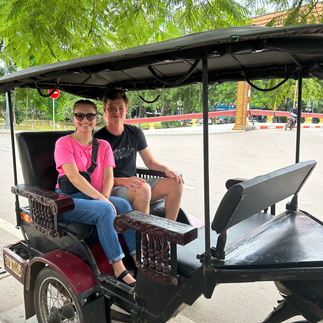

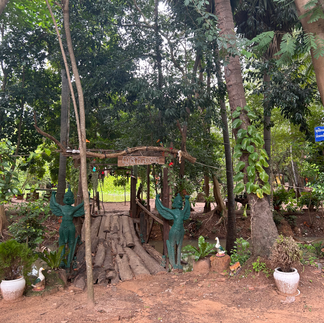



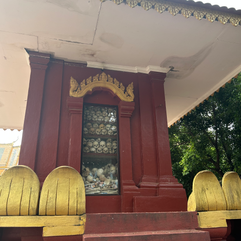







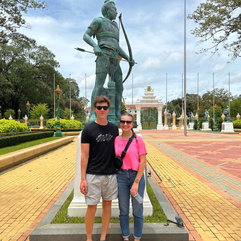








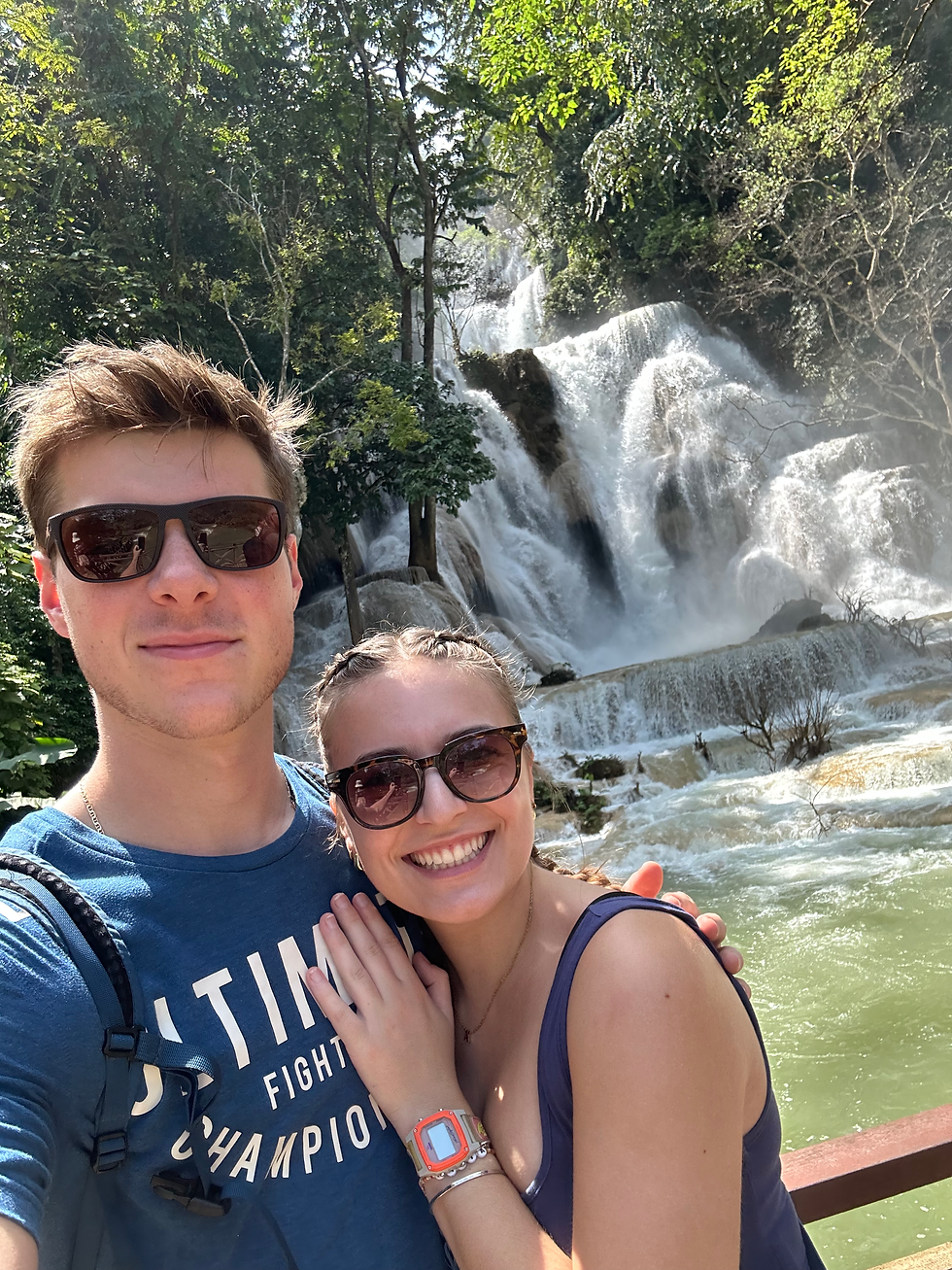
Comments